Mallorca –– On the Trail of La Vida Dulce
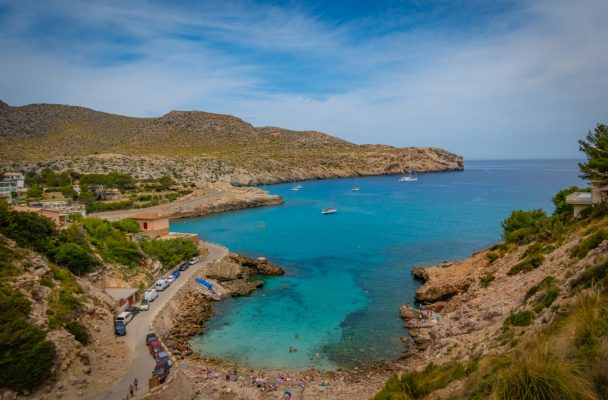
ARTICLE AND PHOTOGRAPHS BY ROBERT BRODEY
I begin with a confession. The Spanish island of Mallorca (Majorca) in the western Mediterranean has never been on my must-travel destination list. This, however, abruptly changes while planning a trip with my mom and sisters to the south of France, and I begin researching nearby getaways for a solo trail running retreat. My needs are simple: a direct flight from Toulouse (TLS), sumptuous geography, and consistently warm sunny weather in early June. With 300 days of sun per year, gorgeous beaches, and the rugged Tramuntana mountain range running up its western flank, the island of Mallorca suddenly jumps to the top of my travel list.
For nearly a decade (barring the grim pandemic years), I’ve been embarking on an annual trail running trip somewhere glorious, including the Canary Islands, Slovenia, and the Italian Dolomites. My original plan in Mallorca is a 4-day, 140-kilometre hike-jog traverse — south to north — through the Tramuntana along the GR221 trail (also called The Dry Stone Route).
Now I’m not one to put my age as a limiting factor, but at 54, I currently don’t have the desire to grind out 35 kilometres a day through baking heat and unfamiliar terrain (getting lost in the mountains is no joke, especially alone). On top of that, my stamina still feels somewhat compromised since getting Covid the previous year (2022), and I have been too busy with family obligations to put in the mileage needed to comfortably go the distance.
The plan finally comes together: I will spend a week at the tip and tail of the GR221 trail, hiking, running, and exploring every day but always coming back to “basecamp,” i.e. a comfy hotel with amenities. This will be the trail version of tapas, little bite-sized running morsels, with plenty of time left to soak up the views, sample the food, hit the beach, and delve into the island’s remarkable history.
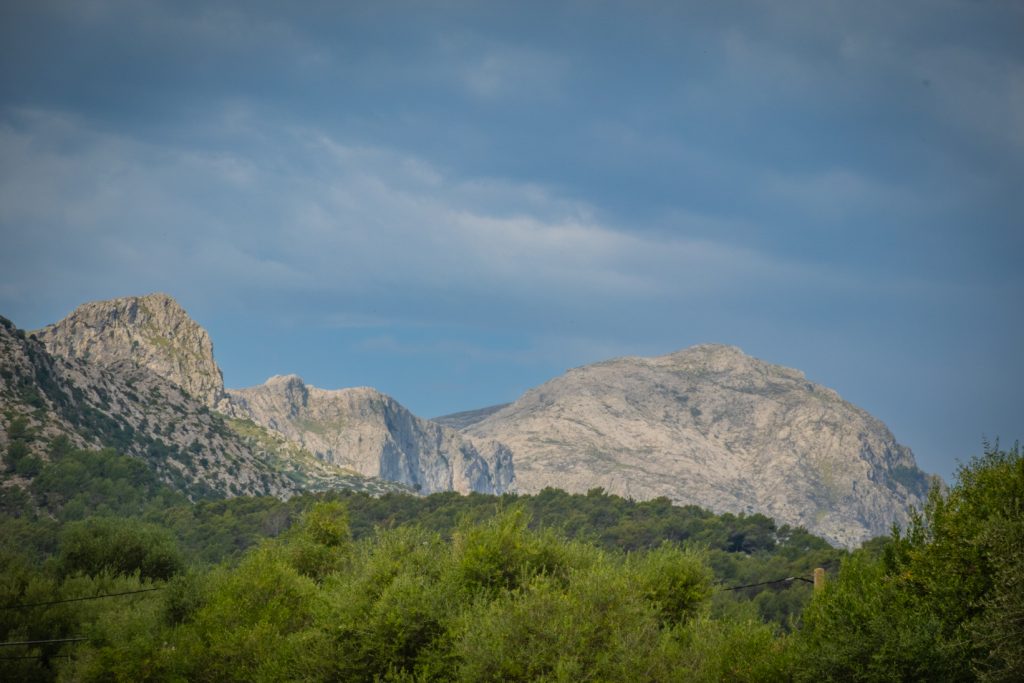
With direct flights from all over western Europe to Palma de Mallorca Airport at the south end of the island (all within an easy one- to three-hour range), Mallorca has been a popular destination with European tourists for decades now. Even better, the public transit system functions like a well-oiled machine and appears, for the most part, to run on time. Of course, car rentals are also readily available for touring the island.
In my case, a Transunion bus delivers me late on a Saturday evening from the airport to Port Pollensa (also spelled Pollença) on the north shore. Side note: The spellings vary on the island, as it is not only a province of Spain but was also settled by Catalán, so many islanders speak both Spanish and Mallorquí, an off-shoot of the Catalán language.
In the morning, I am greeted by one of Mallorca’s 300 days-a-year of sunshine. The 3-kilometre-long waterfront boardwalk is already coming to life with joggers, tired looking parents gripping coffee cups while pushing strollers, and small clusters of cyclists heading for the hills.
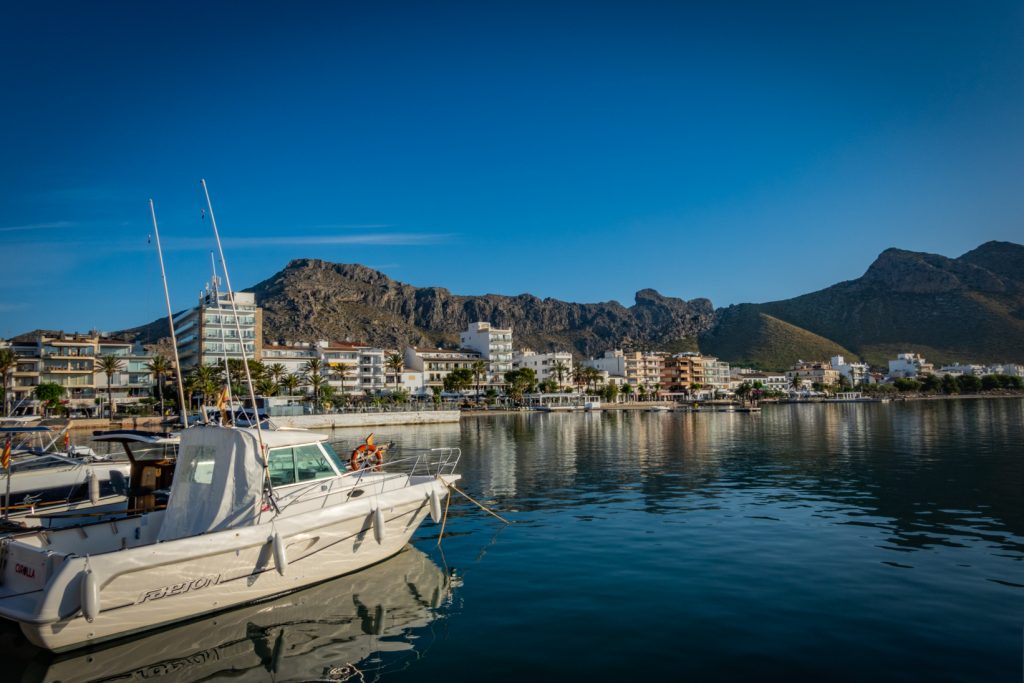
Just offshore, hundreds of boats are moored on the calm glassy sea, while behind the hotels lining the beach, the dry shrubby slopes of the Tramuntana range immediately rise toward the blue sky.
It doesn’t take long to figure out that Port Pollensa has no shortage of things to do, whether the desire is to lounge on the beach, sit on a terrace and watch the world go by, embark on a fishing trip, rent a kayak and paddle the craggy shoreline, or even take the plunge scuba diving. Pollensa also happens to be a popular destination for cyclists and has a very robust rental industry, saving roadies and mountain bikers alike from having to lug their own bicycles across the Mediterranean (one shop I speak with even rents cycling shoes www.bikeislandmallorca.com).
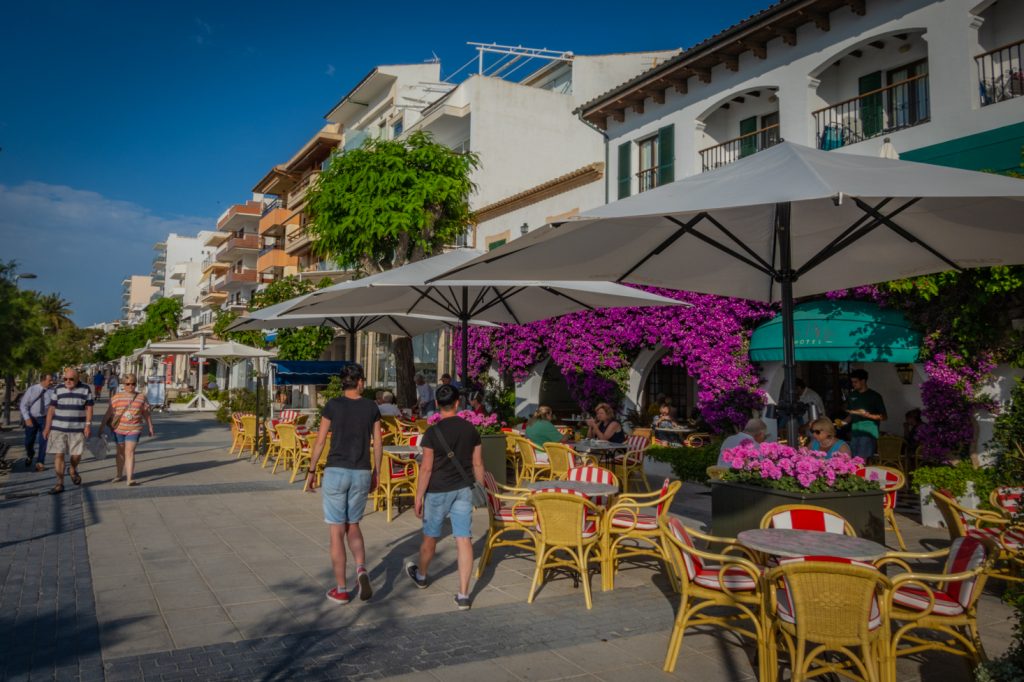
With the sun rising higher in the sky, I pack my bathing suit and towel into my running bag, slip on my trail shoes, and begin an easy paced 4-kilometre run to the town of Cala Sant Vicenç located in a neighbouring cove. The route takes me through residential streets, then along dirt roads before narrowing to a single-track trail up and over a 100-metre ridge then back down along a winding picturesque road to Cala Sant Vicenç (Cala means cove in Mallorquí).
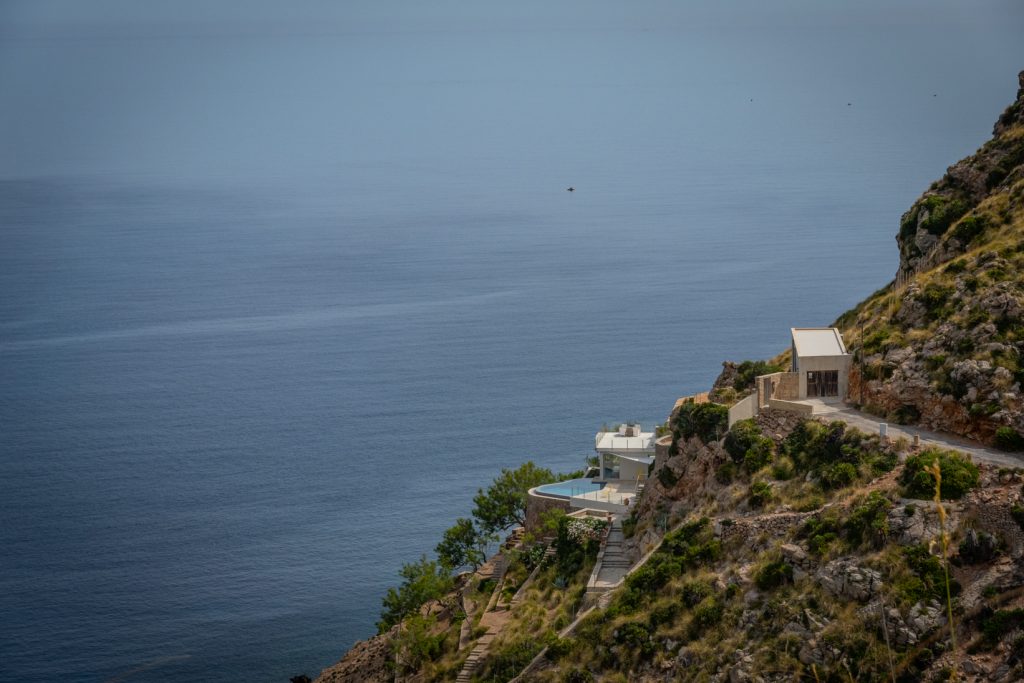
These are not the solitary trails I imagine would’ve greeted me had I run the full length of the GR221, but I am loving every minute of being somewhere new, breaking with routine, and temporarily shedding the responsibility of being a dad, husband, and office guy. For a solid week, I am only accountable for myself and my whims.
On the twisting road down to Cala Sant Vicenç, I am greeted by the turquoise waters that calendars and dream vacations are made of. The town’s waterfront is dominated by hotels, while those magical blue waters teem with kayakers, paddle boarders, and swimmers.
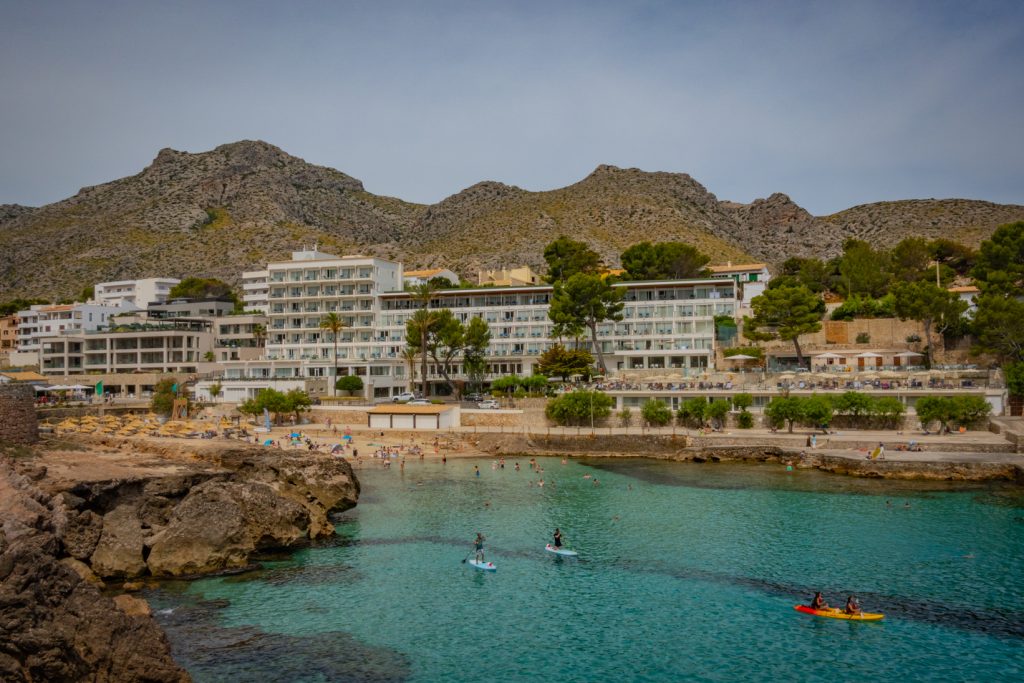
Despite the overlay of modernity, the island still feels ancient, which, at 150 million years old, it truly is! The island roughly sits half-way between Barcelona, Spain, to the north-west and Tangiers, Algeria, to the south. Mallorca’s locality and relative fertility made it prime real estate for seafaring people and wannabe empires. First colonized in the third millennium BC by people from the Iberian Peninsula, it was later settled by Phoenicians, Romans, and later became part of the Islamic Emirate of Córdoba.
Several beaches are on offer in Sant Vicenç, but I decide on Cala Carbó, which may have more rocks and no amenities waterside but has a more laid-back vibe. I take a few hours to hang out, swim in the refreshing sea, and chat with Miguel, a Venezuelan living in Madrid. We discuss everything from the rising cost of living around the world to the dark days visiting Venezuela.
Our conversation reminds me of one of the big reasons I love to travel. It’s about connecting not only with landscapes and the energy of a place, but also with people — whether local or of the travelling variety. Hence, I am travelling alone but never feel lonely.
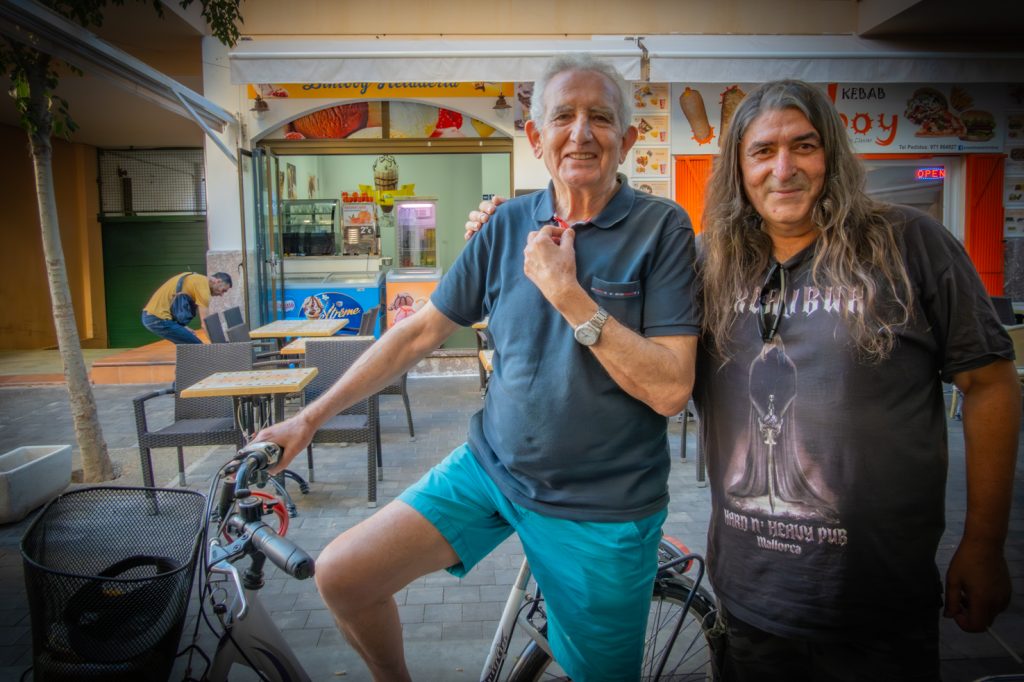
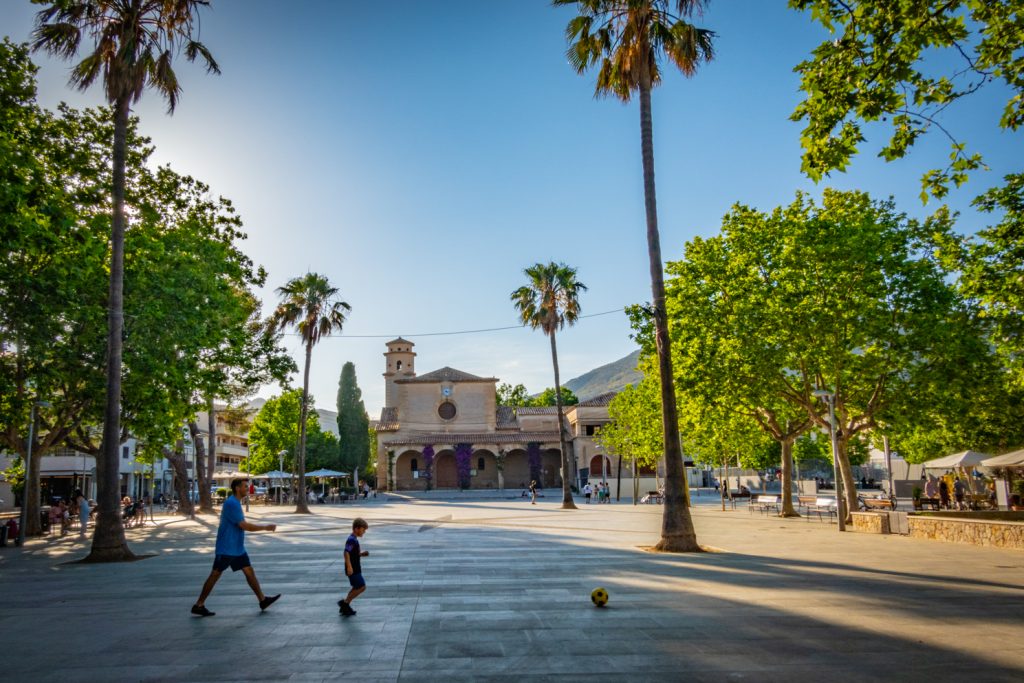
Let’s eat. Port Pollensa most definitely has a robust restaurant scene, from local mom and pop restaurants and cafés to the more upscale restaurants dominating the waterfront. Blessed with all of those sunny days, patio culture thrives here.
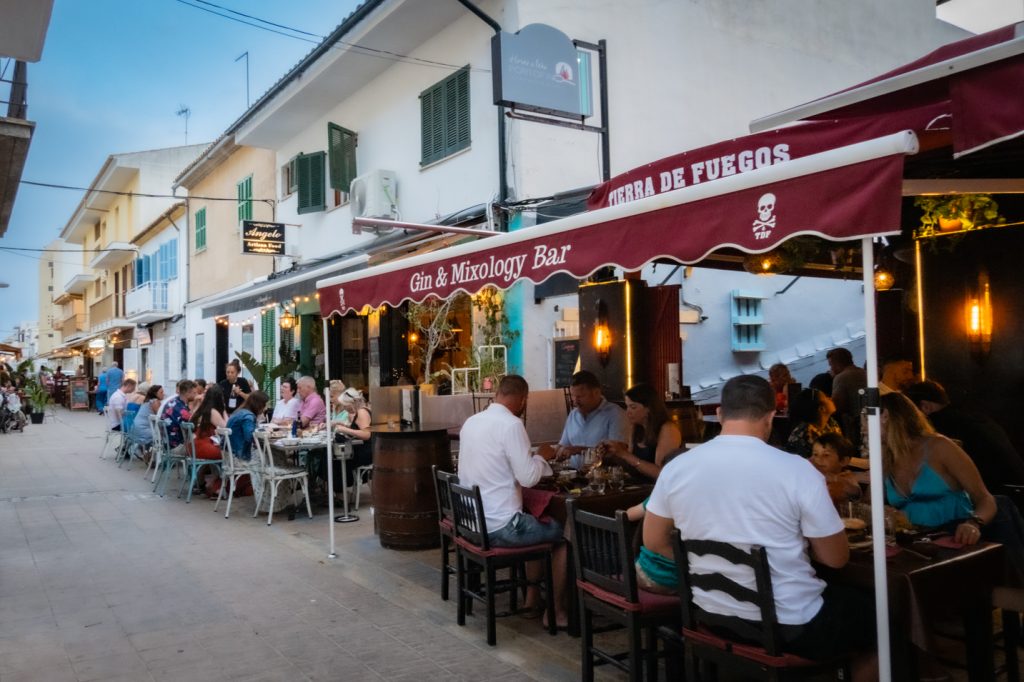
Not wanting to miss out on any of the culinary highlights, I never return to the same restaurant twice. One day, I sit down to a 4-euro slice of pizza piled with fresh olives, while the following evening, I sit down to a 40-euro dinner at El Casinet, where I indulge in a gorgeous plate of Bufala mozzarella with pesto and a memorable brochette of grilled chicken the size of my forearm.
Another night, I am drawn to Tierra del Fuegos set back from the waterfront on Carrer de la Verge del Carme, which has something of an upscale bohemian vibe with great 1970s R&B pumping through the speakers and a stylish emerald-green bar with all the accoutrement of a first-class bistro. Here, I sample their veggie burger with yogurt sauce and piled with guacamole and crispy cassava chips, which does not disappoint.
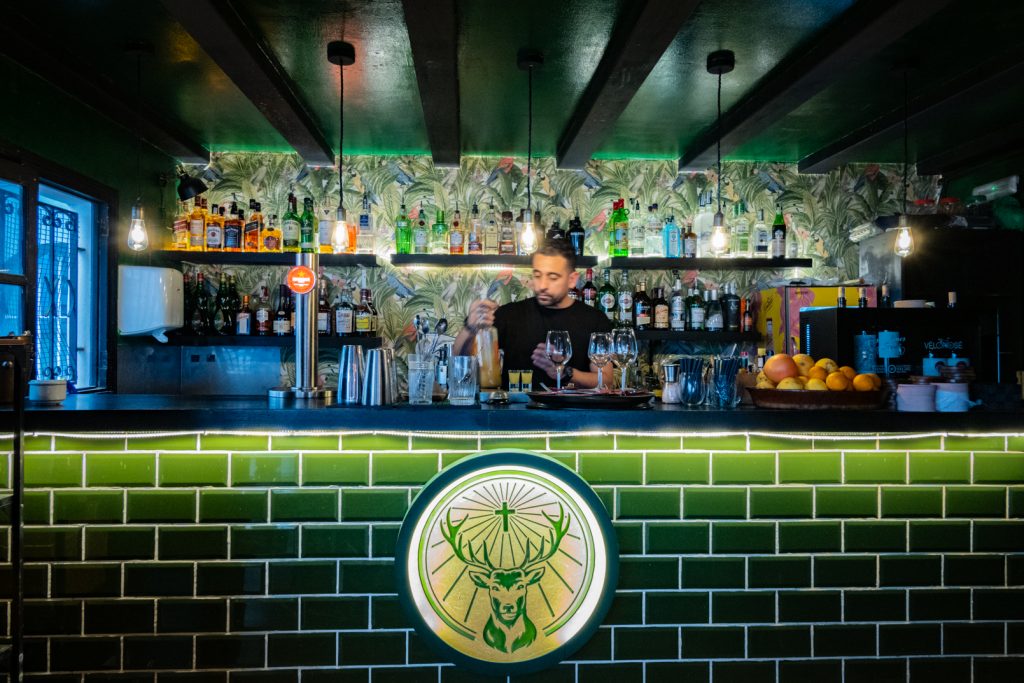
*
For three full days, I explore the area, doing an exquisite run along the Camí de Cala Bóquer trail to a cove that is only accessible by boat or on foot (4 kilometres from downtown Port Pollensa). I share the trail with the magical looking goats that roam and munch on the shrubbery. After a zig-zag jog down the final slope, I arrive at a pebble beach with views toward the magnificent rising cliffs of the Formentor peninsula. There, I swim and float blissfully alone, experiencing firsthand la vida dulce (the sweet life).
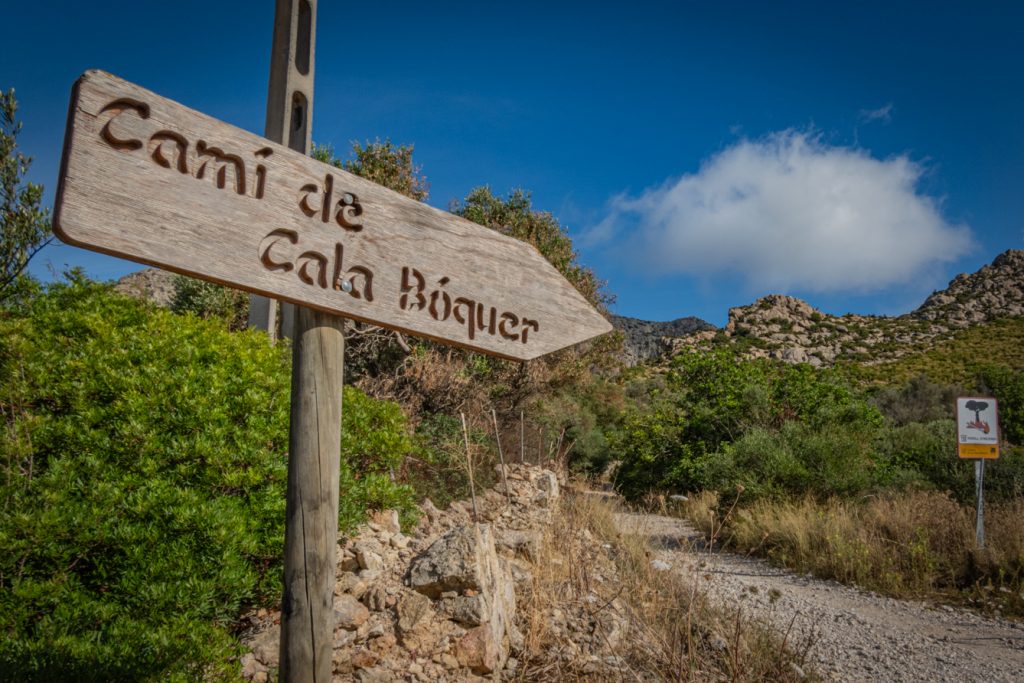
Path to paradise
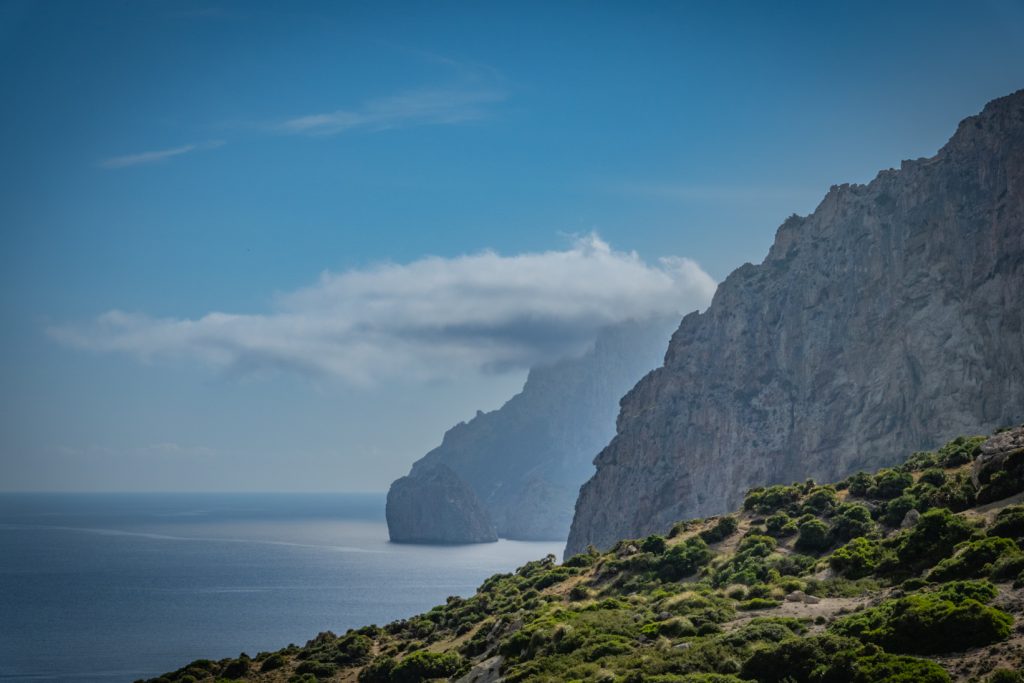
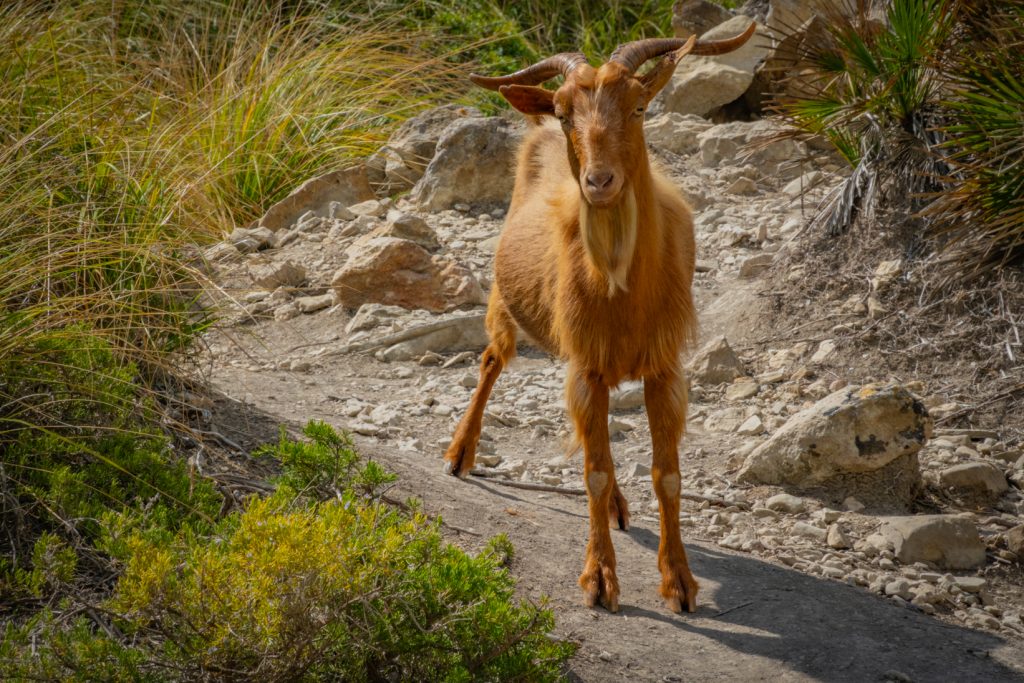
Another worthwhile outing is to the Formentor lighthouse set among the jutting cliffs at the tip of the peninsula at the island’s most north-westerly reaches. The winding 20-kilometre road offers sublime views of mountainscapes and turquoise waters at every turn. Recently, the road became restricted to cars during the high tourist season, as the heavy traffic was causing a great many issues. While visitors can still drive to Formentor Beach part way up the peninsula, after that, the twisting road becomes the exclusive domain of bicycles and the regular flow of public buses (3 euros each way). Sunsets at the point are renowned, hence the buses run back and forth from Port Pollensa to the lighthouse until well after dark.
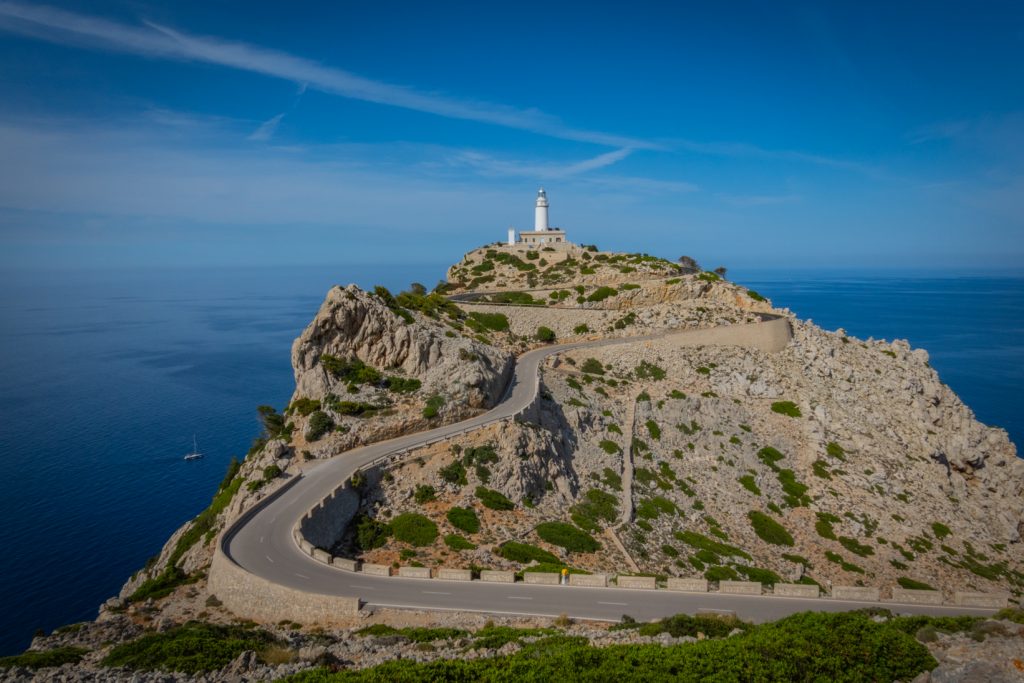
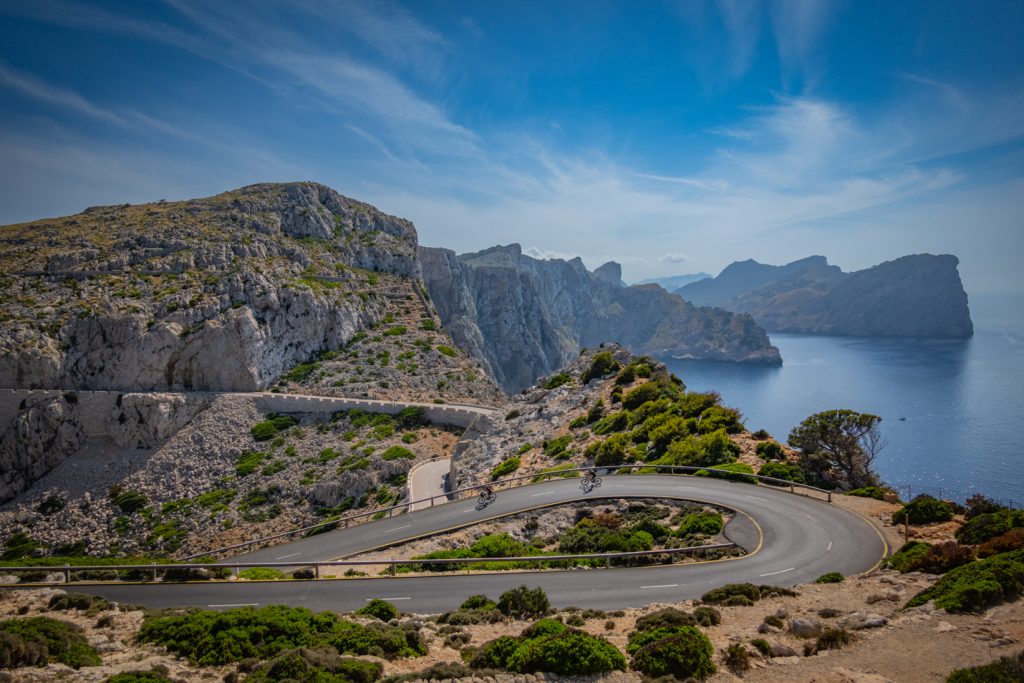
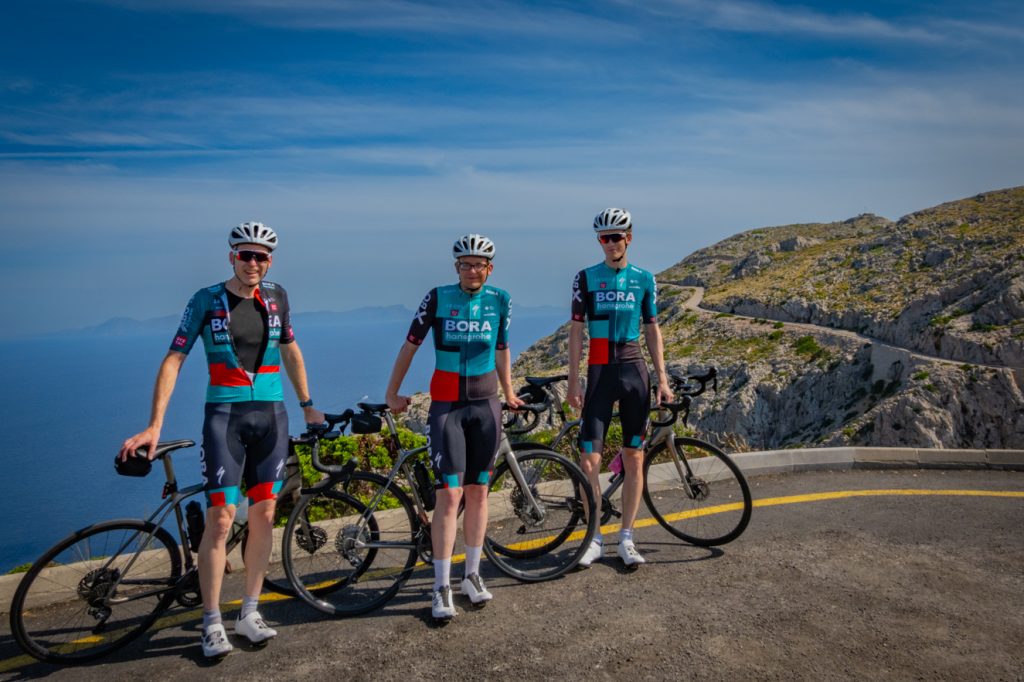
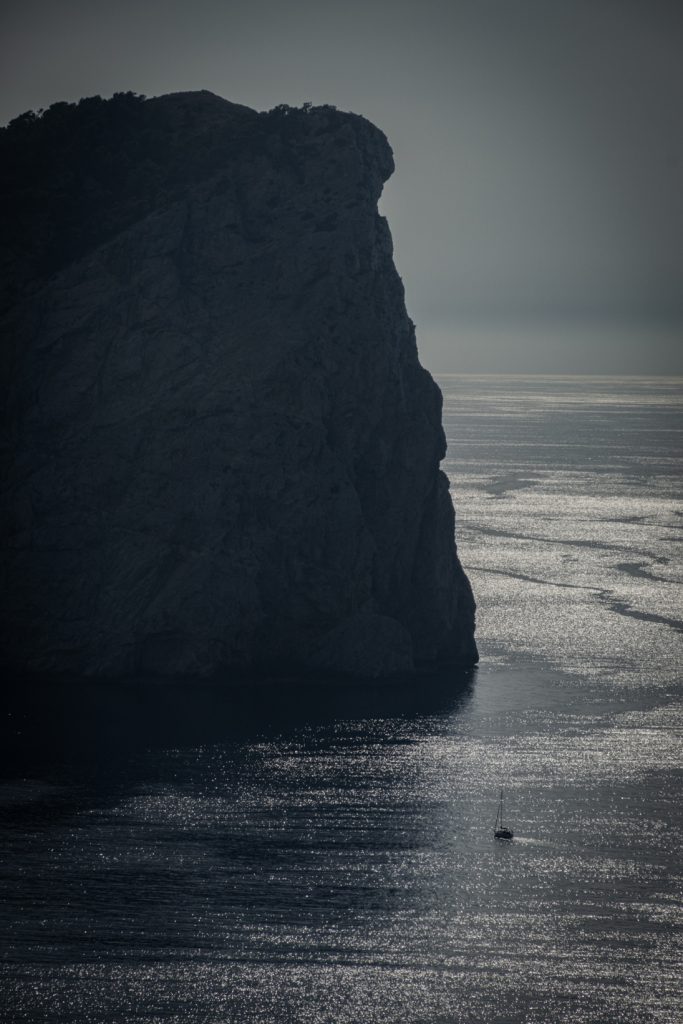
On my final day at the north end of the island, I take some time to wander the ancient town of Pollensa set six kilometres inland from the port. First settled in the 12th Century by the Moors of North Africa, the Catalán people and the Knights Templar wrested control of the town a century or so later.
The narrow streets are stacked with 17th and 18th Century buildings, and it’s easy to spend a few hours wandering and absorbing these historic surroundings. I hike up and down the 365 broad stone steps that lead to the diminutive Calvary Chapel then swig back a fabulous espresso in the town square, the Plaça Mayor.
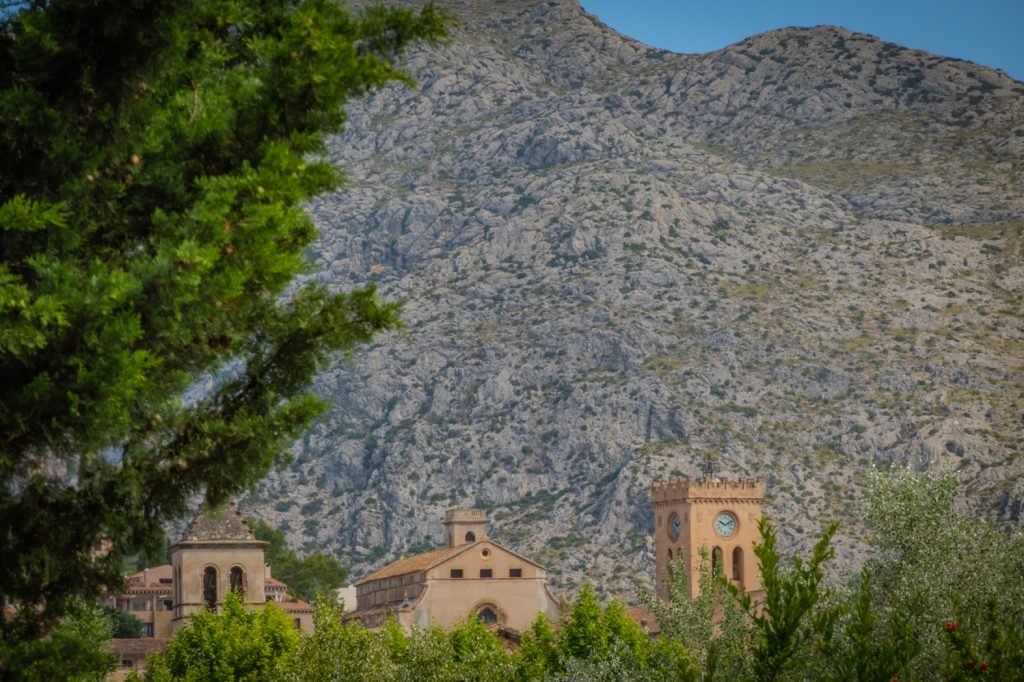
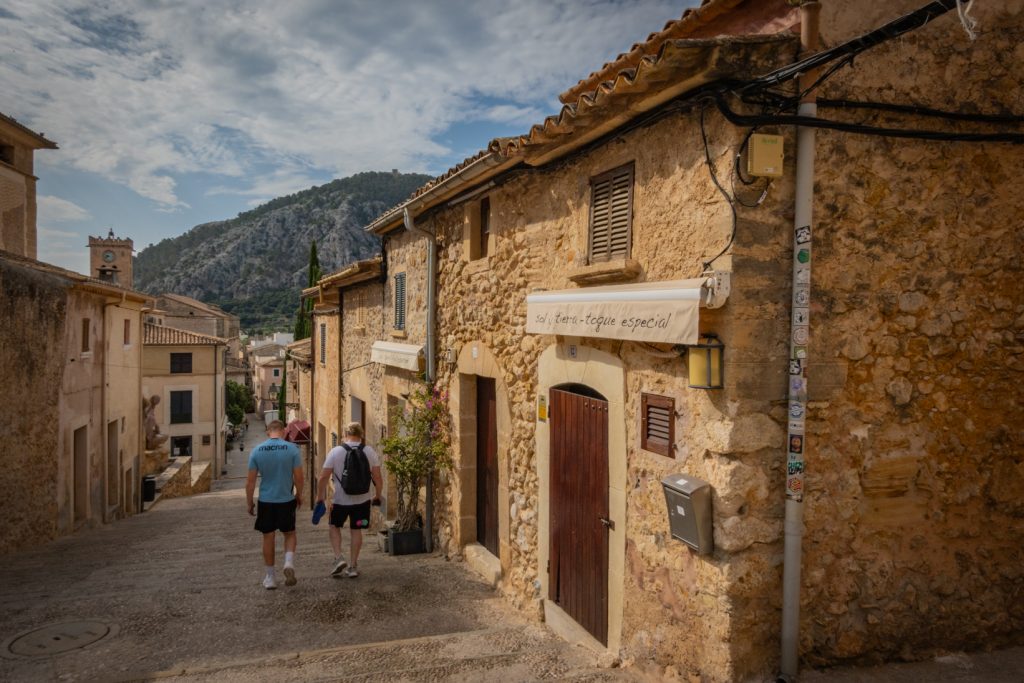
I wrap up my exploration of Pollensa with a one and a half kilometre, 300-vertical metre walk up to Puig de Maria, an important pilgrimage site and the official end of the GR221. The path largely follows a shaded car-free road, steep at times with many switchbacks.
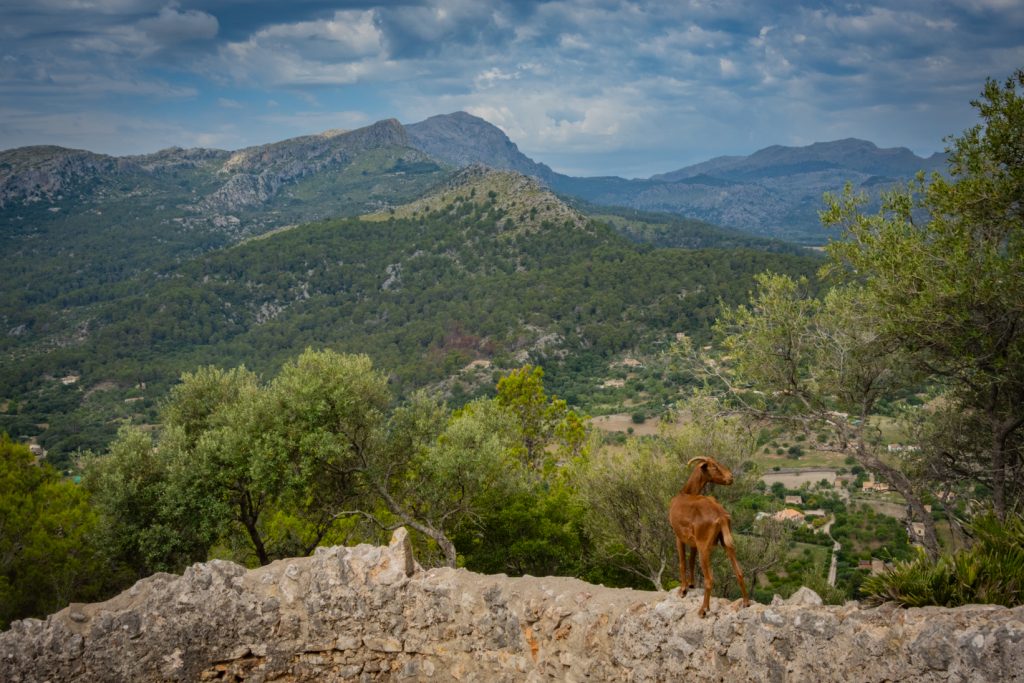
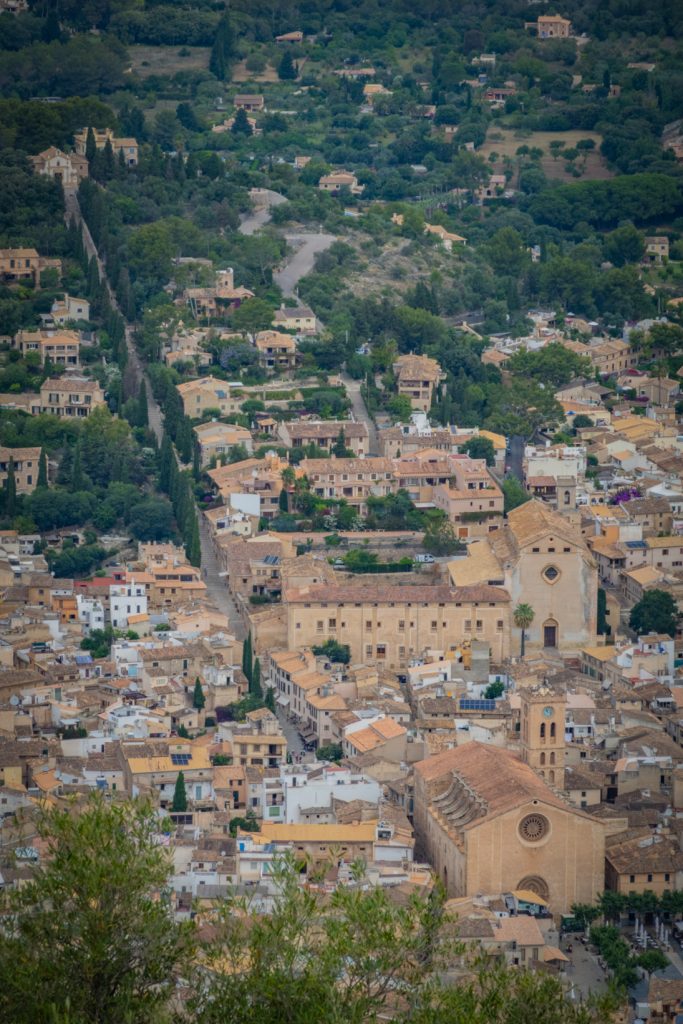
Up top, the view in all directions is superb, whether gazing toward the Serra de Tramuntana, the sprawling coastline, or the lush fields of the interior that seem to go on for as far as the eye can see. The religious site itself dates back to the 14th century, when the Black Death was raging on the island and the Bishop ordered a chapel built in the hopes of gaining divine protection against the plague.
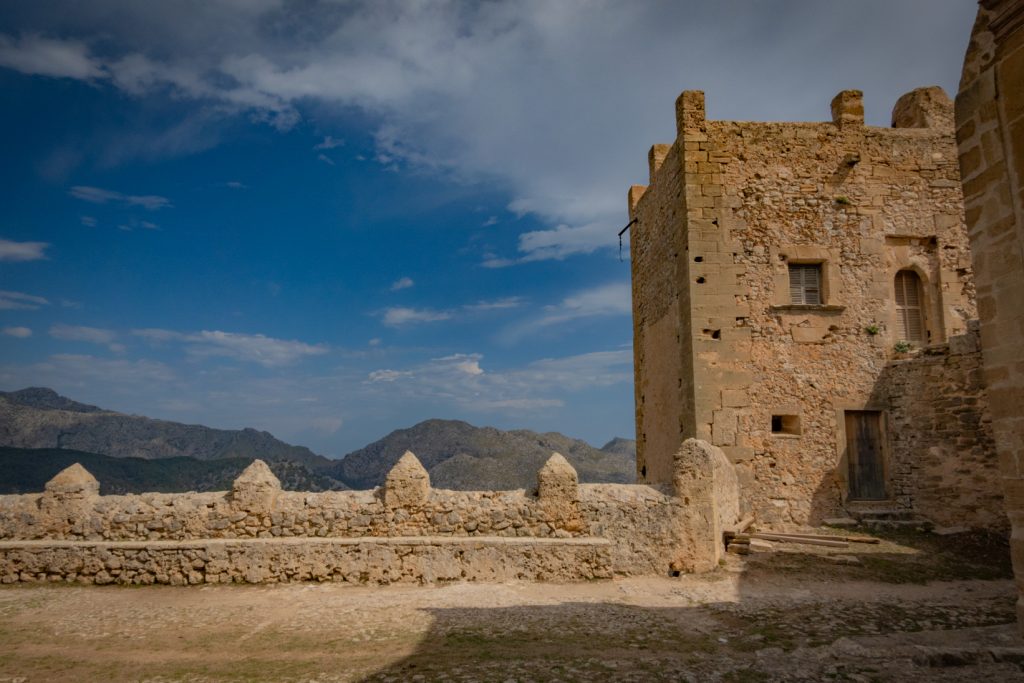
The grounds feature a nearly 700-year-old monastery with a church and a fortified tower. I had read that the pilgrimage shrine still operated as a hostel, but much of the structure appears closed when I arrive, including the church doors.
Toward the bottom of my descent, I meet an English couple in their seventies hiking up. They are dressed in polo shirts and tennis shoes, and, as we pass each another, the woman glances at me with a forlorn look. I mention that it gets steeper further along. “We know,” she says, with a laugh. “We’ve done this climb ten times or so,” the man adds. “We do it each time we come back to Mallorca. To make sure we’re still alive.”
*
Now that I have “finished” the GR221 at Puig de Maria, it’s time to “start” it in Port d’Andratx (the “x” is pronounced “ch” in Mallorquí). I hop a one hour bus to the south of the island, passing through Palma, the capital of the autonomous community of the Balearic Islands (which includes Mallorca, Menorca, Ibiza, and Formentera). A sizable city with bustling tree-lined boulevards, historic Palma appears worthy of a stopover. But, alas, time is not on my side, so I switch buses and continue another hour onward to Port d’Andratx to the west.
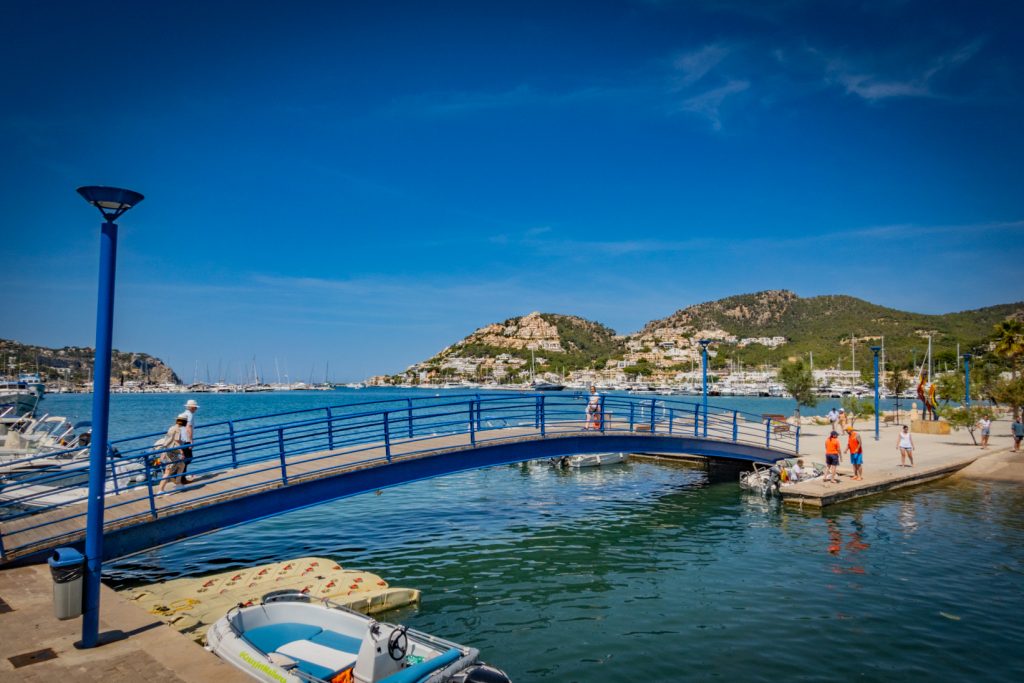
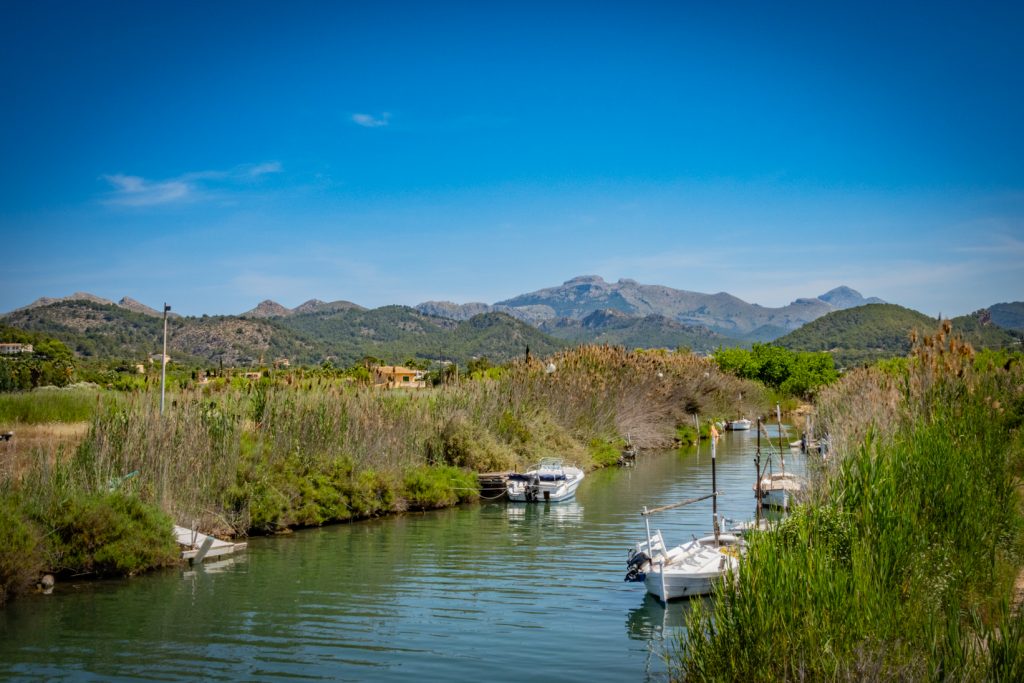
From the port of Andratx, I begin the 8-kilometre hike to my final destination, Sant Elm, along the GR221, via a path that climbs among the pines and hillside mansions. Beyond the first ridge, there is a feeling that civilization has been left behind, and I am travelling through a timeless landscape of mountains and sea. Much of the GR221, in fact, was built on ancient footpaths used for millennia to travel from village to village.
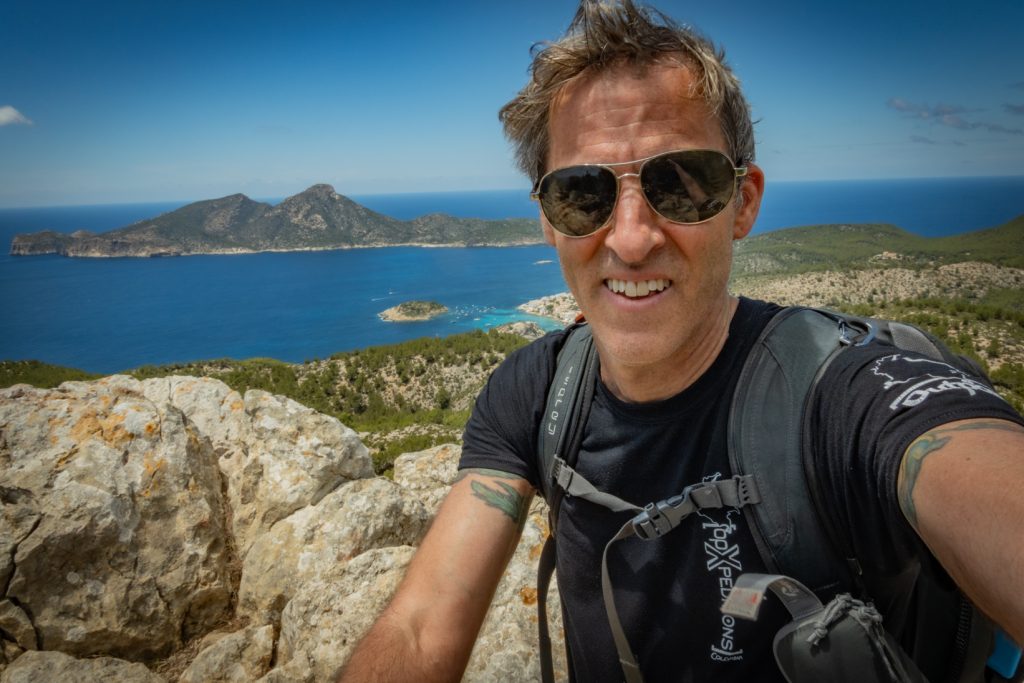
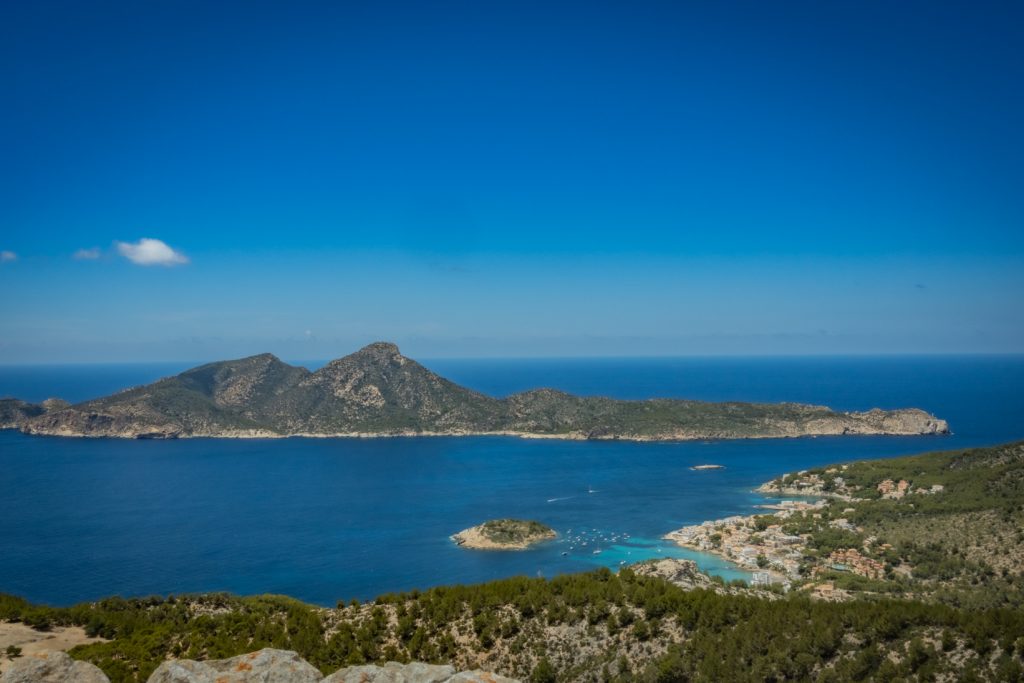
I arrive in the charming port town of Sant Elm with its pedestrian thoroughfare lined with stores and plenty of restaurant options. To the west, the island of Sa Dragonera appears like a reptile emerging from the sea. A short boat ride away, the six-kilometre-long island is an officially protected nature reserve and offers lovely hikes, beautiful vistas, and the chance to check out a unique sub-species of wall lizard.
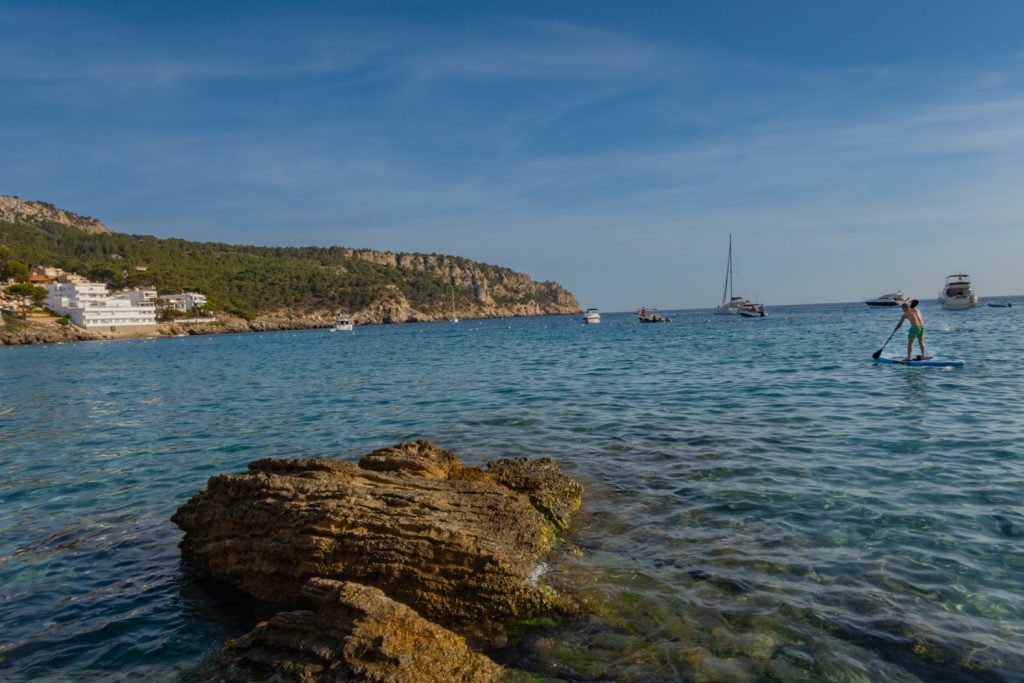
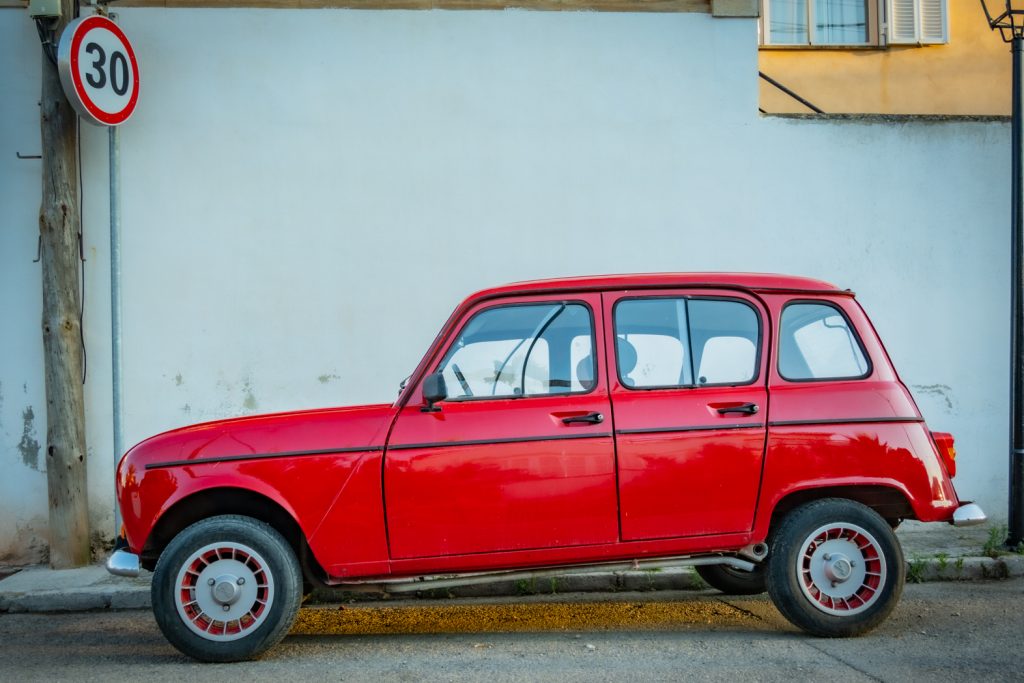
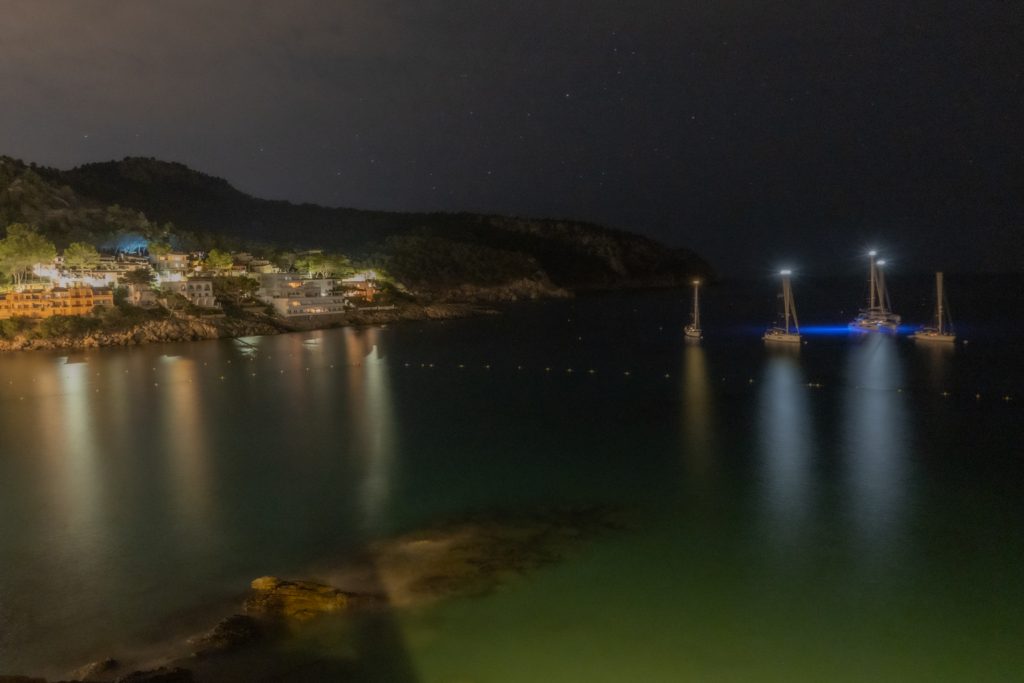
In the morning, I set off on a 12-kilometre loop along the coast on my way up to La Trapa, a 19th Century monastery built high up in the mountains. Despite chomping at the bit to run, my progress is regularly interrupted, as I stop to reference my GPS map only to find I have missed a turn and am following a goat path. Quickly navigation and not speed become my main objective.
Finally, I arrive at the 16th Century stone tower of Cala Basset that stands like a sister sentry to the Tramutana lighthouse across the Freu channel on Sa Dragonera Island. For hundreds of years, the tower guarded the waterway against pirates and raiders.
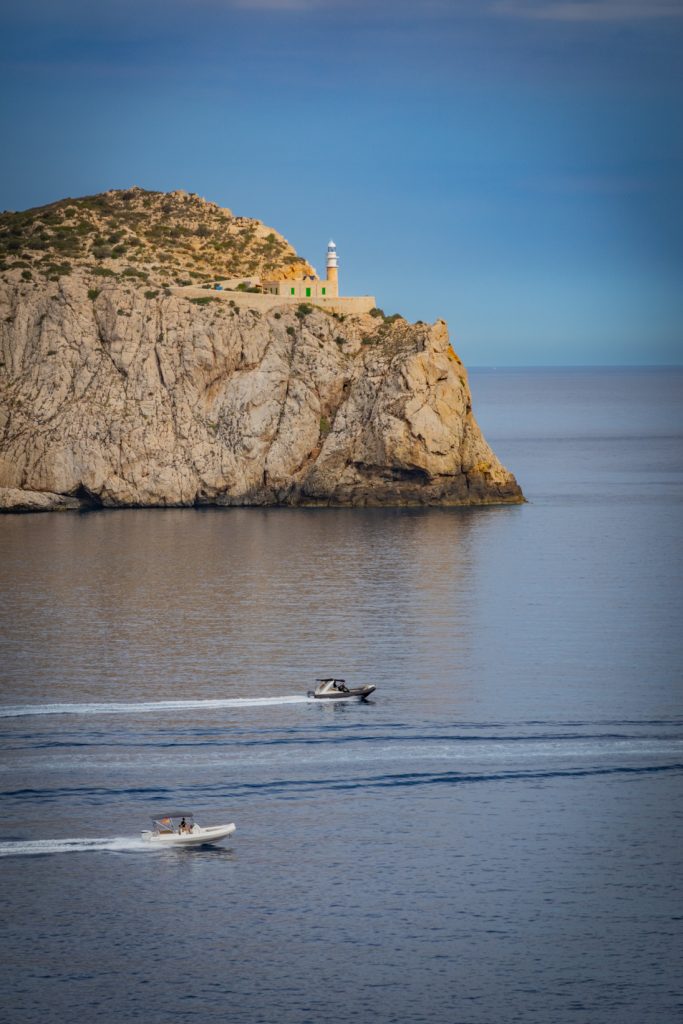
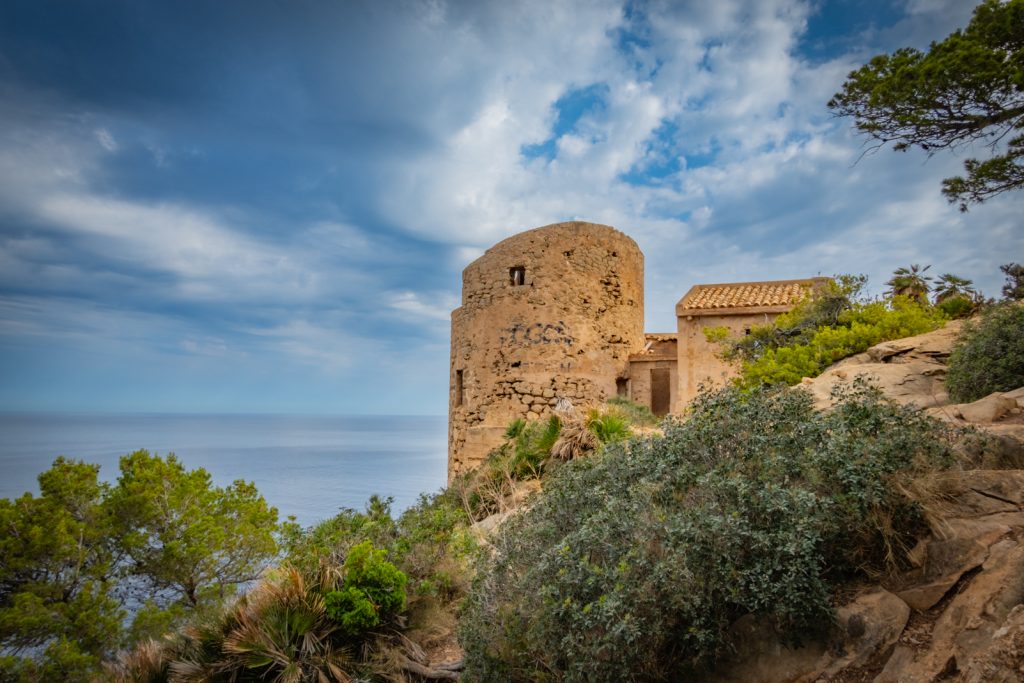
After the watchtower, the foot path turns inland and into the forest before meeting up with the official GR221 trail. I follow the zig-zagging track then scramble up along some rocky terrain for a little more than 250-vertical metres until I arrive at the ruins of La Trapa, sweaty and exhilarated by the effort and the panoramic views.
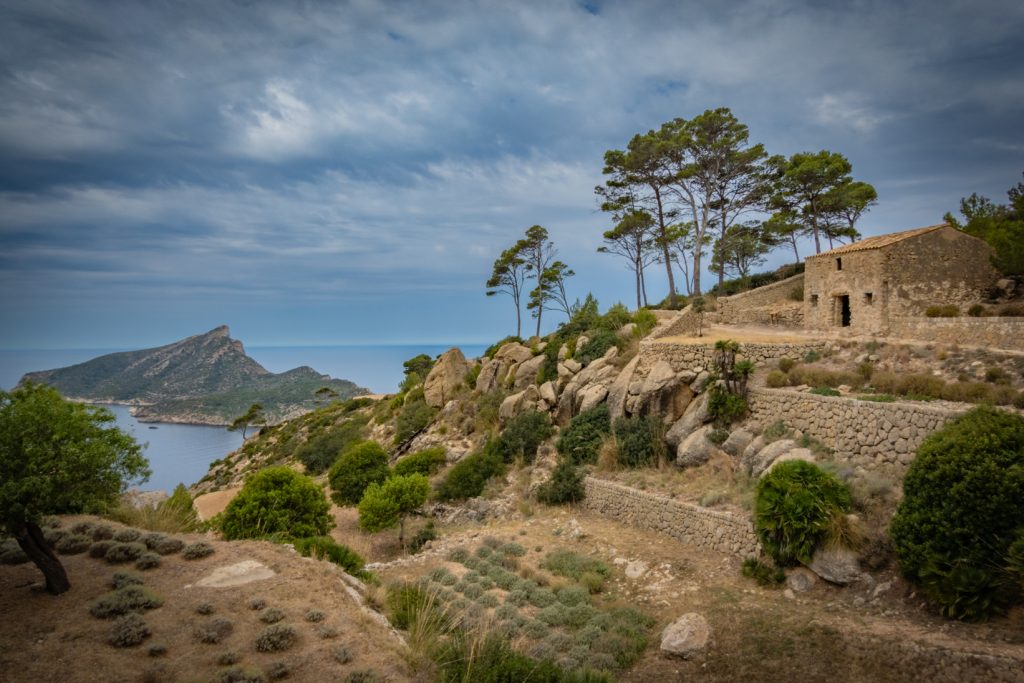
The route continues on up to the mountain pass poetically named Pas de les Ànimes (Step of the Souls), which marks the beginning of the descent back to Sant Elm along a series of switch-backs for several kilometres before plunging into the evergreen forest and onward to the awaiting sea at Sant Elm.
As I run downhill, there is no second guessing if I am on the right path. It’s downright liberating to surrender to gravity, running with the abandon of a child. And isn’t being carefree what a true vacation is all about?
After a week on the island living la vida dulce and sampling little bocas (bites) of Mallorca’s trails, towns, and beaches, I can only imagine what else is on offer. I conclude that this idyllic island is most definitely worthy of being revisited over and over again and thus will remain on my must-travel destination list for many years to come.
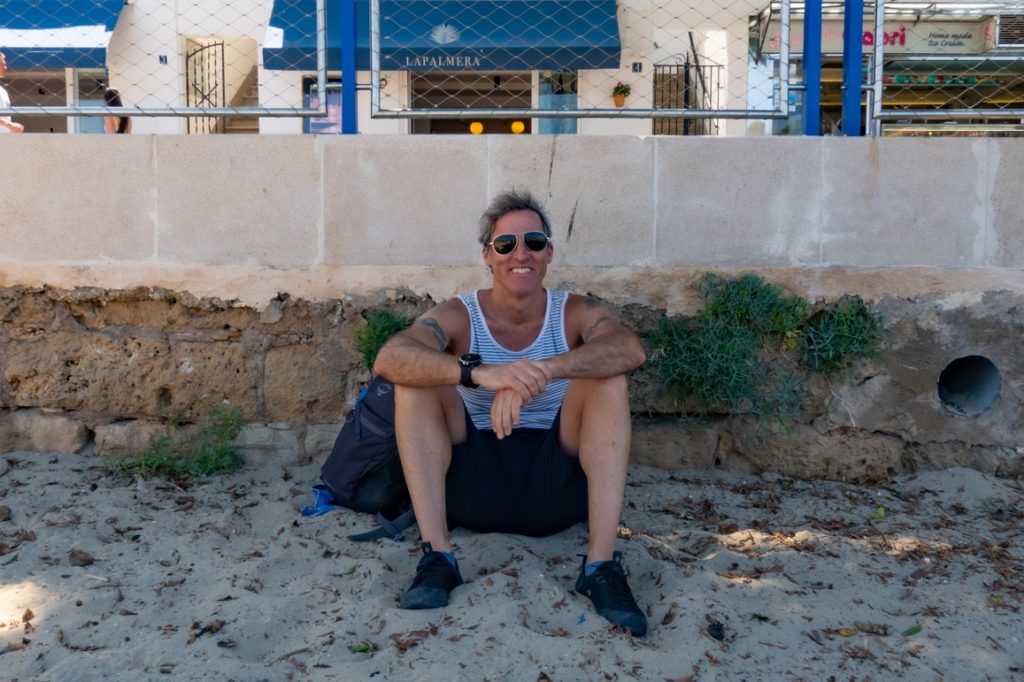
Leave a Reply
You must be logged in to post a comment.